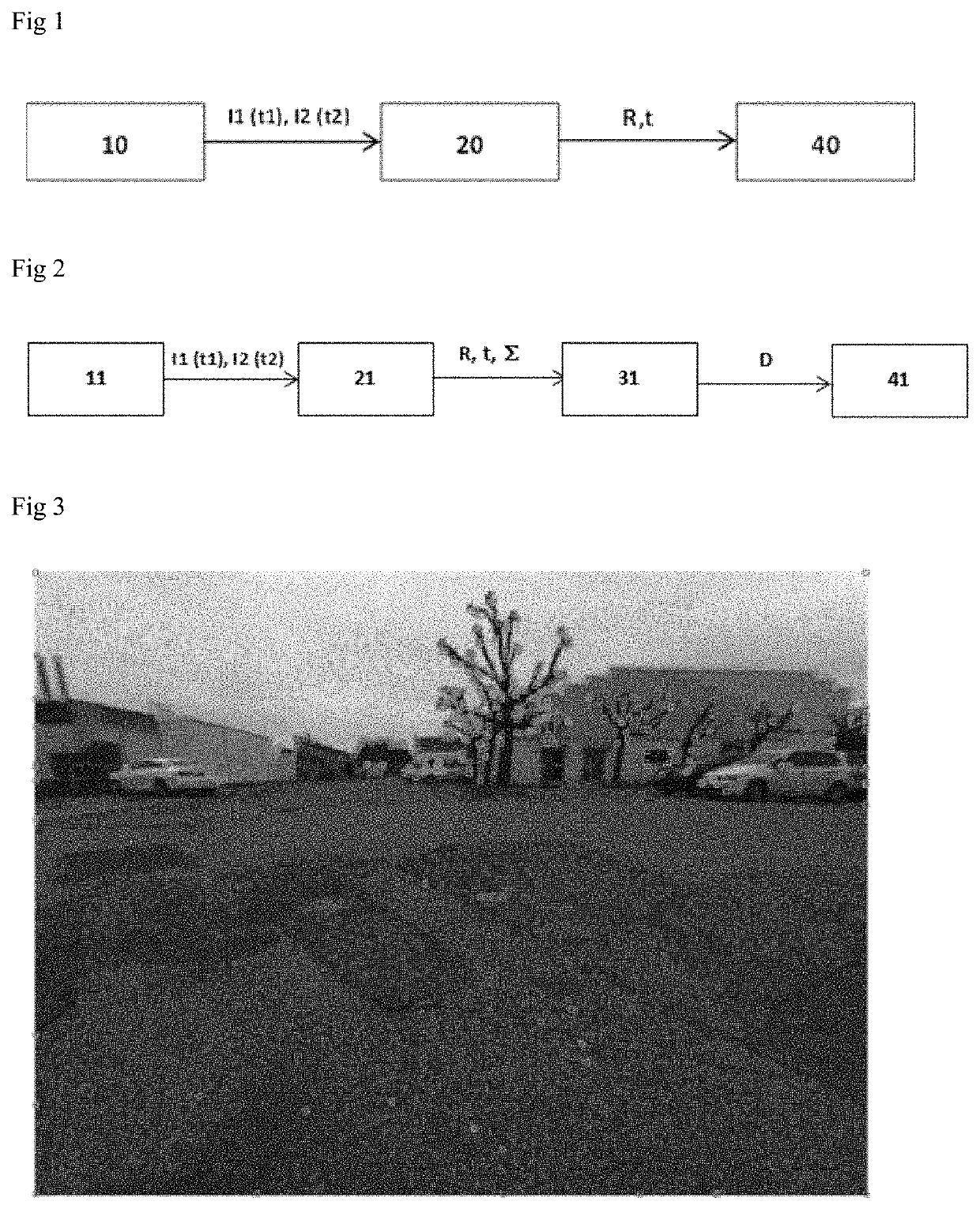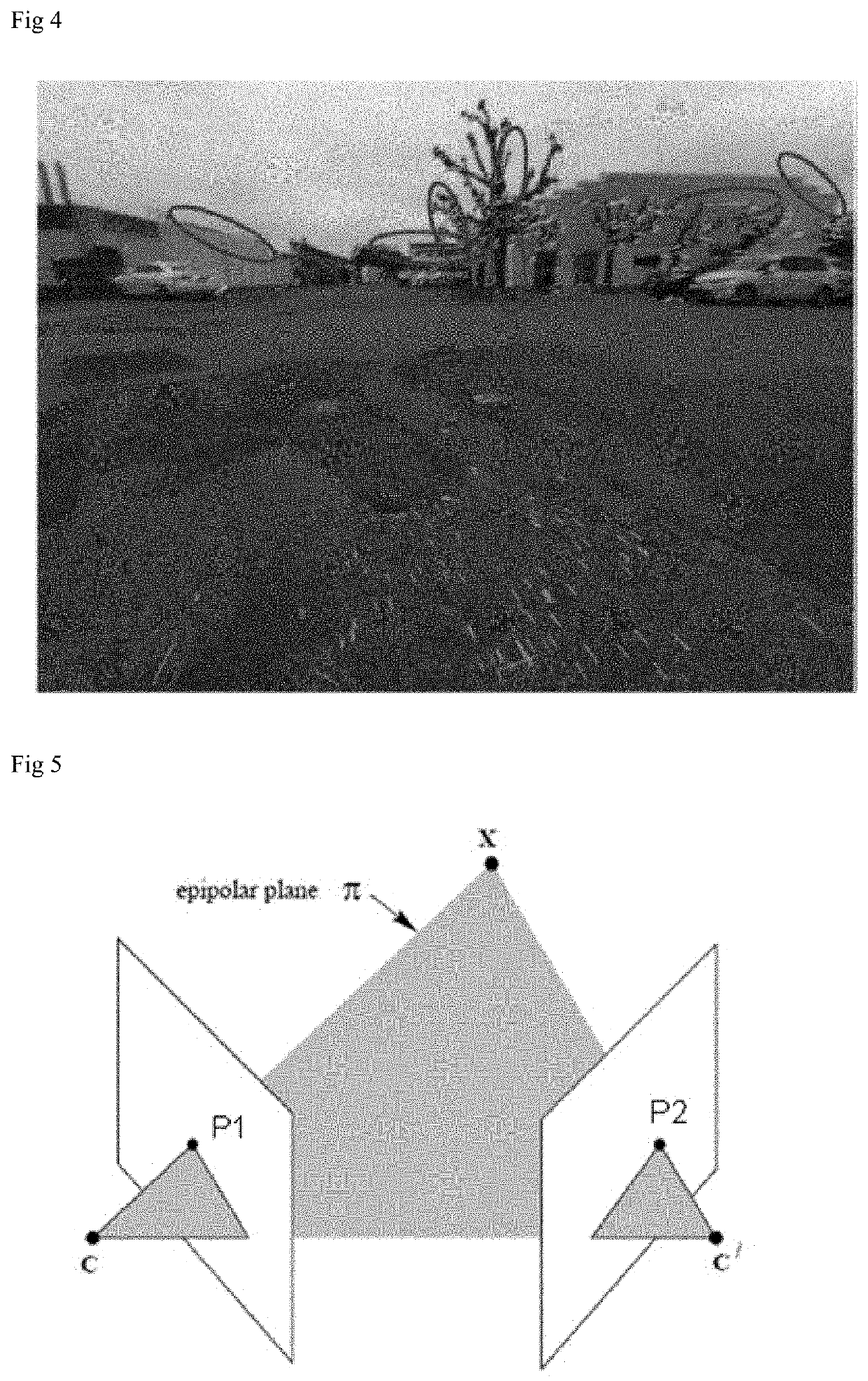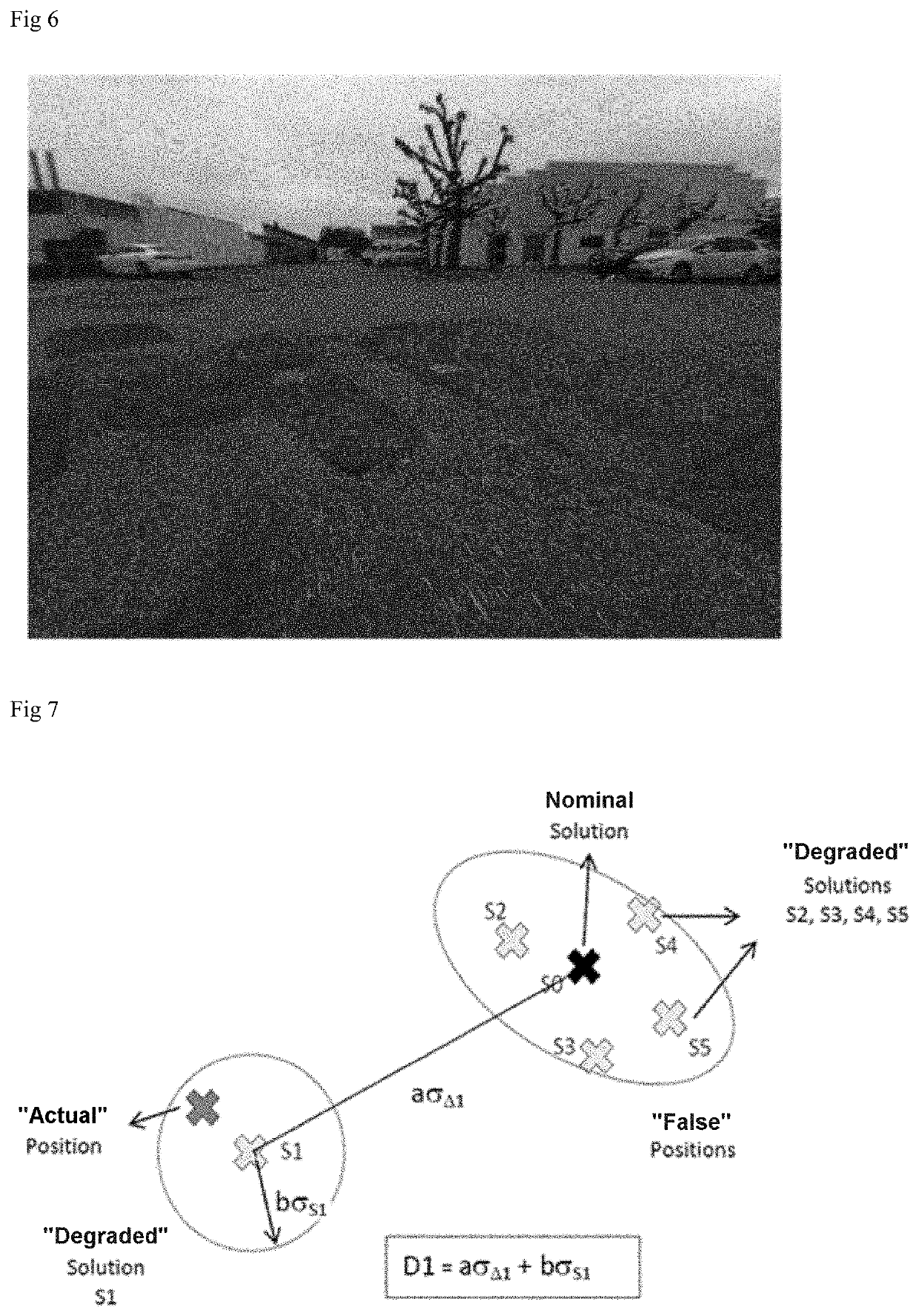Method for determining a protection radius of a vision-based navigation system
a navigation system and protection radius technology, applied in image analysis, image enhancement, instruments, etc., can solve the problems of affecting the performance of the navigation system, and affecting the navigation system. the effect of navigation system stability, fast and adaptability
- Summary
- Abstract
- Description
- Claims
- Application Information
AI Technical Summary
Benefits of technology
Problems solved by technology
Method used
Image
Examples
Embodiment Construction
[0088]In the detailed description of the invention which follows, the invention is applied to a vision-based navigation system which is embedded onboard a carrier and which uses a monocular camera. The monocular vision system is less expensive in terms of hardware, as well as in terms of data acquisition and processing.
[0089]The wavelength, the frequency band, and other characteristics of the camera if relevant, can vary as a function of the specific implementation and specific mode of use of the said camera.
[0090]Any other suitably adapted image sensor can be used, for example a binocular camera, a light detection and telemetry sensor (LiDAR), a millimetre-waves radio detection and telemetry sensor (RADAR), or else an Infra-Red imager (“IR”). Several sensors can be combined.
[0091]The invention can alternately be applied to a fixed vision-based navigation system (instead of an onboard system).
[0092]The motions determined in the detailed description are the rotation and the translati...
PUM
 Login to View More
Login to View More Abstract
Description
Claims
Application Information
 Login to View More
Login to View More - R&D
- Intellectual Property
- Life Sciences
- Materials
- Tech Scout
- Unparalleled Data Quality
- Higher Quality Content
- 60% Fewer Hallucinations
Browse by: Latest US Patents, China's latest patents, Technical Efficacy Thesaurus, Application Domain, Technology Topic, Popular Technical Reports.
© 2025 PatSnap. All rights reserved.Legal|Privacy policy|Modern Slavery Act Transparency Statement|Sitemap|About US| Contact US: help@patsnap.com



